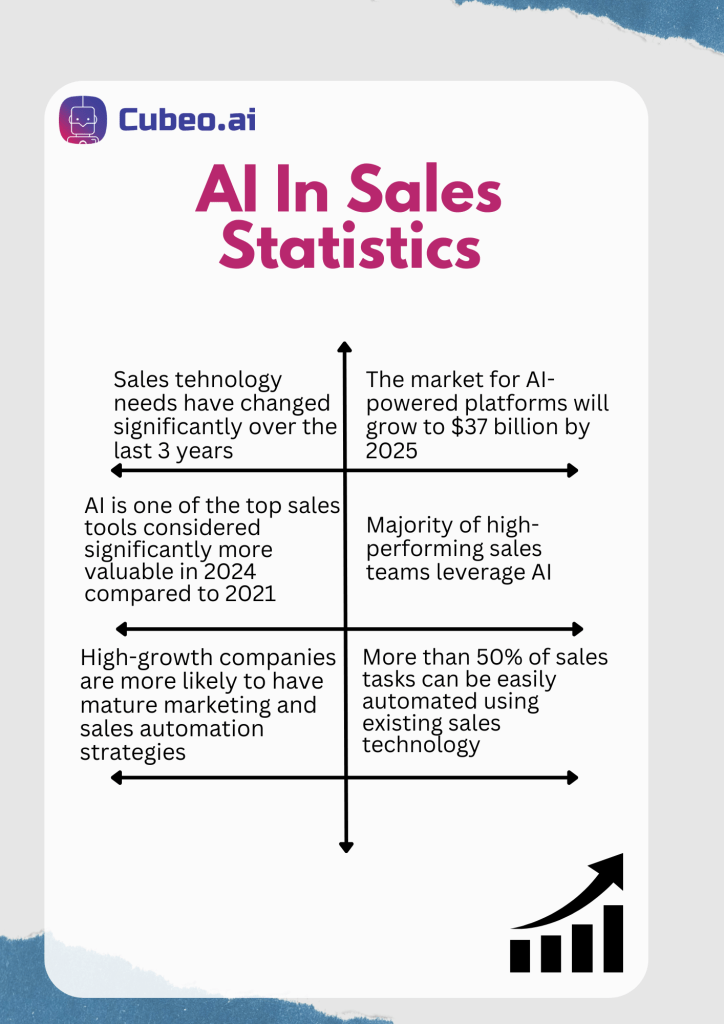Table Of Contents
Introduction
Welcome to the crossroads of innovation and strategy, where AI meets marketing and sales. In a landscape where technology continuously reshapes how we connect with our audience, understanding and integrating AI into your strategy is not just an advantage; it’s a necessity.
But, the question remains: How can you know if AI is the right fit for your business goals in marketing and sales?
This guide will take you through 5 steps you should consider when making this huge decision and ways in which, after reading this, you will be sure whether or not AI is beneficial for your marketing and sales needs.
Step #1
Determine Specific Areas
Start by making sure which areas in marketing and sales could benefit from the use of AI. Whether it’s improving lead generation, optimizing customer engagement, or automating repetitive tasks, clarify your goals to ensure alignment with your business objectives.
Step #2
Assess Your Data Readiness
AI thrives on data. The more quality data you have, the more effectively AI can work for you. Assess your current data collection and management systems. Are they robust enough to feed AI algorithms the information they need to make insightful decisions? This step is crucial because AI is only as good as the data it receives. Understanding your data landscape will help you determine if you’re ready to implement AI or if you first need to improve your data infrastructure.

Check out the AI Assistants applied in Marketing and Sales post.
Step #3
Evaluate AI Tools and Solutions
With a clear understanding of your data readiness and specific areas of need, the next step is to explore the AI tools and solutions available that can address these needs. Look for tools that not only fit your current business model but also grow with you as your business evolves. Consider factors like cost, scalability, ease of integration, and vendor support when choosing AI solutions.
Step #4
Conduct a Cost-Benefit Analysis
Before diving into AI, it’s essential to weigh the costs against the potential benefits. AI implementation can be expensive, but the returns in terms of increased efficiency, customer satisfaction, and revenue can be substantial. Estimate the potential ROI by considering factors such as increased lead conversion rates, time saved through automation, and improved customer retention rates.
Step #5
Plan for Change Management and Training
Integrating AI into your marketing and sales strategies will require changes to your current processes and possibly your organizational structure. Plan for the necessary change management and training to ensure your team is ready to leverage AI effectively. This includes training them on how to use new tools and reshaping your culture to embrace data-driven decision making.
In conclusion, AI can significantly enhance your marketing and sales efforts if implemented thoughtfully and strategically. By following these five steps, you can confidently decide whether AI is right for your business and how to integrate it seamlessly to maximize its benefits.
FAQs
How much does it cost to integrate AI into marketing and sales?
The cost can vary widely depending on the complexity of the AI solutions and the scale of implementation. Generally, it ranges from minimal investments for off-the-shelf solutions to significant expenditures for custom systems designed for large enterprises.
What are the main benefits of using AI in marketing and sales?
The main benefits include increased efficiency through automation, enhanced customer insights through data analysis, and more effective marketing campaigns and sales strategies leading to higher conversion rates and customer satisfaction.
Can AI replace human marketers and salespeople?
While AI can automate many tasks, it is generally used to increase the capabilities of human teams, not replace them. It helps by providing insights and automating routine tasks, allowing humans to focus on more strategic and creative aspects of marketing and sales.
How do I ensure my data is good enough for AI?
Regular audits of your data quality, ensuring data is collected ethically and lawfully, and investing in robust data management systems are essential steps to ensure your data is AI-ready.
How long does it take to see results from AI in marketing and sales?
The timeline can vary, but many businesses start seeing results within a few months of implementation. However, significant improvements and ROI often become apparent after a year or more of continuous use and optimization.



